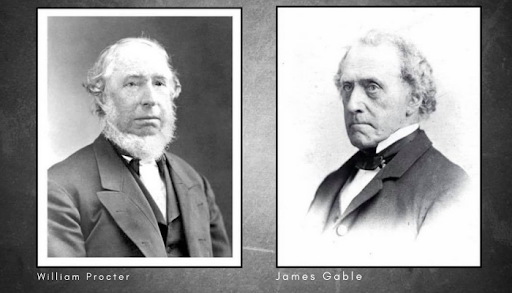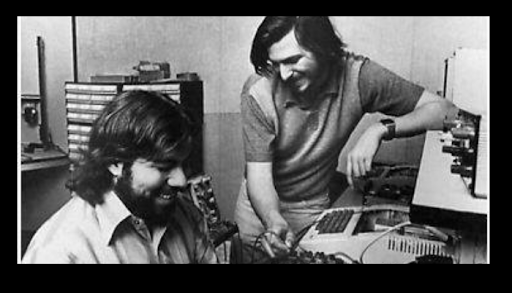The 3 strong co-founder relationships that inspired the world!

Danielle Newnham, the famous entrepreneur and author once said, “Choose co-founders the way you'd choose a spouse. The reality is that you simply will, a minimum of within the youth, spend much more time together with your co-founders than your partner.”
Co-founders like the parents of a newborn business, spend countless hours working (and arguing) together so as to ensure that they do whatever they can in their capacity to make the business successful. Thus, just like parenting, the co-founder relationship is also very personal.
Some of the world’s most successful co-founder relationships have flowered between people with drastically different outlooks, viewpoints and skill sets. But often, those differences have made the relationships work. Combine a sales-minded dreamer with a genius engineer, or combine a punk with a hip-hop pioneer, and to our surprise, the sum can oewften be greater than its parts. Here are stories of some strong co-founder relationships that birthed some of the most famous names in the world of business.
William Procter & James Gamble (P&G)
William Procter and James Gamble were brothers-in-law, who started P&G, which today is a multinational commodity company that has over 100 thousand employees and has a market capitalization of more than 200 million US dollars. What we see today as P&G, started as an amalgamation of Procter’s candle making business and Gamble’s soap-making business, on the advice of their father-in-law. Proctor was the husband of Olivia Norris, while Gamble was the husband of Olivia’s sister. The ground for the advice was that they were competing for the same raw materials (fat & oil) within the same family.

Today, P&G may be a successful company, but even after its start, it took around 20 years to reach 1 million US dollars in sales. By then, it only had 80 employees. Tough times tried the partnership between Procter & Gamble but they made most of the opportunities. The Civil War began, and securing a contract with the Union army for candles and soaps pushed their profits and made their products well-known all over the world.
Steve Jobs & Steve Wozniak (Apple)
Steve Jobs and Steve Wozniak’s story of founding Apple is one of the most well-known and most appreciated tales of founding. Jobs and Wozniak came to know each other through a friend and instantly connected due to their mutual interest in the upcoming computing technologies of the Homebrew Computer Club in Silicon Valley. The first and major product they worked together on was a “blue box” for creating free long-distance phone calls. In 1976, they launched their first computer, called the Apple I. To finance its production, both Jobs and Wozniak pooled in money they got by selling off Jobs’ VW Microbus, and Wozniak’s HP-65 calculator.

Both the co-founders were very different in their focus as well as viewpoints. Jobs was focused on the marketing and sales of their products along with making them more suited to the user. Wozniak was tech-savvy, who focused more on the technical side of things. Both the mindsets combined into one force boosted Apple’s success in different dimensions.
Irrespective of rumors about the disputes between both of them, Wozniak said while remembering their co-founder relationship, “We never had a fight or an argument, we were always friends.”
Bill Hewlett & Dave Packard (HP)
It’s unclear how Procter and Gamble selected the order in which their names would appear in the brand name, but we all know how Bill Hewlett and Dave Packard figured it out: They flipped a coin.
Hewlett and Packard were both graduates in EE from Stanford University. After becoming friends through a series of interactions at college, they decided to rent a garage in Palo Alto in the year 1938 to begin working on their first product together. It was an audio oscillator used to test sound equipment. In 1939, they formalized their partnership to start what we today see as HP. Today, the same garage holds a plaque that reads “The Birthplace of the Silicon Valley”.
What’s been remarkable about their co-founder relationship is that even with a company on their name, their friendship and cooperation stayed. The management was also proof of that. The management of HP held an employee-centric view that provided flexible working hours, profit-sharing, and other benefits to the employees. As Bill Hewlett once noted, “What I’m most pleased with is that the incontrovertible fact that we actually create how to figure with employees, allow them to share within the profits, and still keep control of it.

Another proof of how good they were as friends as well as co-founders was their ability to hold each other’s back during tough times. When Hewlett went to serve in the Army in the wake of WWII, Packard ran the corporation on his own until Hewlett’s return. Similarly, when Packard stepped down as HP’s CEO on his posting as the U.S Deputy Secretary of Defense during the Vietnam War, Hewlett managed the company on his own. This culture of cooperation and sprouting a feeling of belongingness at HP has stood strong over the years, and now we know, why.
To get more insights on how the business world buzzes, read:
- Marketing lessons Spotify has taught us over the years -By Arpita Samata from DMS, IIT Delhi
- Alibaba and the business of trust: A case study -By Anisha Dhawan from GLIM Chennai
- Meri Maggi has a few marketing lessons to teach!
- Covid-19 impact: Can the world of beauty and cosmetics prove resilient?
- The rise and rise of Zomato - A case study
Login to continue reading
And access exclusive content, personalized recommendations, and career-boosting opportunities.
Blogs you need to hog!

What Innovation Does For Efficiency and Competitiveness in a Corporate Sector?

Online to Offline Commerce- Everything one needs to know

How Do You Work Around Branding Guidelines To Be Guidelines And Not Limitations? | Alekhya, Brand Manager- Vivel, ITC | Dove, Unilever













Comments
Add comment